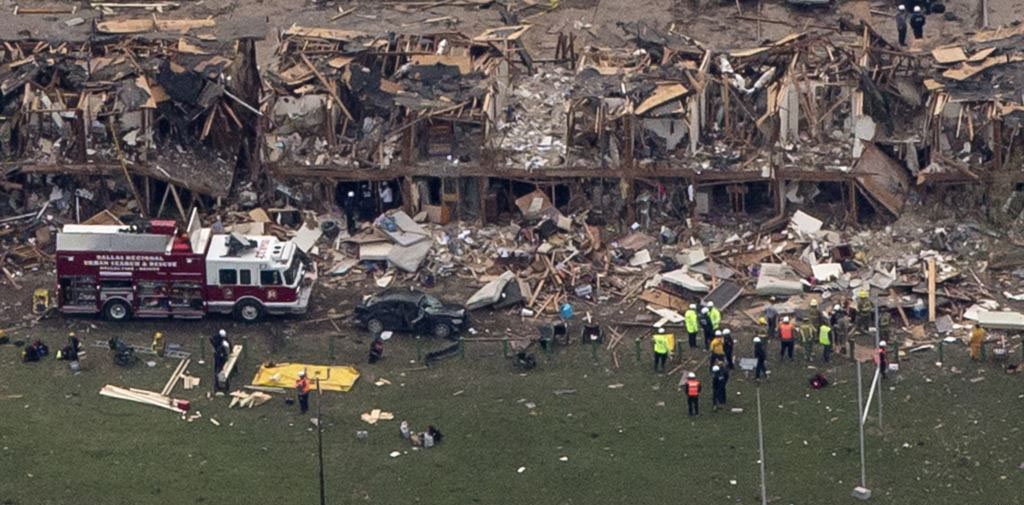Ammonium Nitrate
This material is widely used as a fertiliser, on its own or compounded with other materials. Separately it is blended with some combustible component, to make a cheap explosive material blended on site and used commercially, and the blend has also been used with devastating effects by terrorist groups. As a fertiliser, use is seasonal, with the biggest stocks at distributors and on farms in the spring.
The explosion at West fertiliser in Texas on the 17th April 2013 killed 15 people, of whom 10 were members of emergency response teams. This has to be one of the most tragic and easily avoidable industrial explosion events in a long time.
The potential for ammonium nitrate on its own to explode has been known since 1921 when a huge store at Oppau in Germany exploded killing over 500.
A ship fire in Texas City in 1947 triggered an AN explosion also killing 500 including all but 1 member of the city fire brigade. This demonstrated that although the material does not itself burn, it can explode if large enough piles are seriously overheated. The purity and density has an influence on the sensitivity of the AN to detonation. Consequently the major hazard legislation in Europe is linked to detailed compositional specifications, but for the most hazardous grade, top tier requirements are imposed at just 50 tons. The guidance was revised after an explosion at Toulouse which killed 30 and injured 2500 people. A substantial amount of background data is available from the conference which followed the explosion.
Factory Mutual guidance downloadable for free if you register on their site suggests that piles less than 50t in size have a minimal detonation hazard. So the simplest of precautions, keeping the stack size down and adequate spacing between stacks should have prevented this explosion. Preliminary information from the investigators suggests that between 28 and 34t exploded, so perhaps the AN was contaminated, or perhaps the maximum stack size needs to be revised downwards. Even with a low maximum figure, in the wide open spaces of Texas, this ought to be achievable.
Fires of course can be prevented if there is nothing to burn. So the second simple precaution is to keep away from the AN anything at all which can burn. A dedicated store, with non combustible fire resisting walls and all potential fuels such as timber, packaging, wooden pallets etc.etc kept completely away. Easy to do, easy to check.
What was actually present was AN stored in wooden bins, in a wooden building that also stored seeds. This apparently is normal for the industry in America. Too much attention seems to have focused on the risk that terrorists would steal material to make a bomb, and very little recognition of the risks that come from fire. Will we learn the lesson this time? The CSB comment that the incident caused more offsite damage than anything else they have investigated in the last 25 years gives me hope.
It is easily believable that those who ran the store did not understand these simple requirements, but the emergency services ought to be better informed. They need to know what chemicals are present in any large fire, and what risks they pose. In a small place like West, Texas, even the volunteer fire fighters need to know what is on their patch, and not put themselves at risk, from an explosion or toxic chemical fumes. Tackling domestic fires to save lives is one thing, but much more information and training is needed to tackle fires at industrial and chemical warehouse premises.
